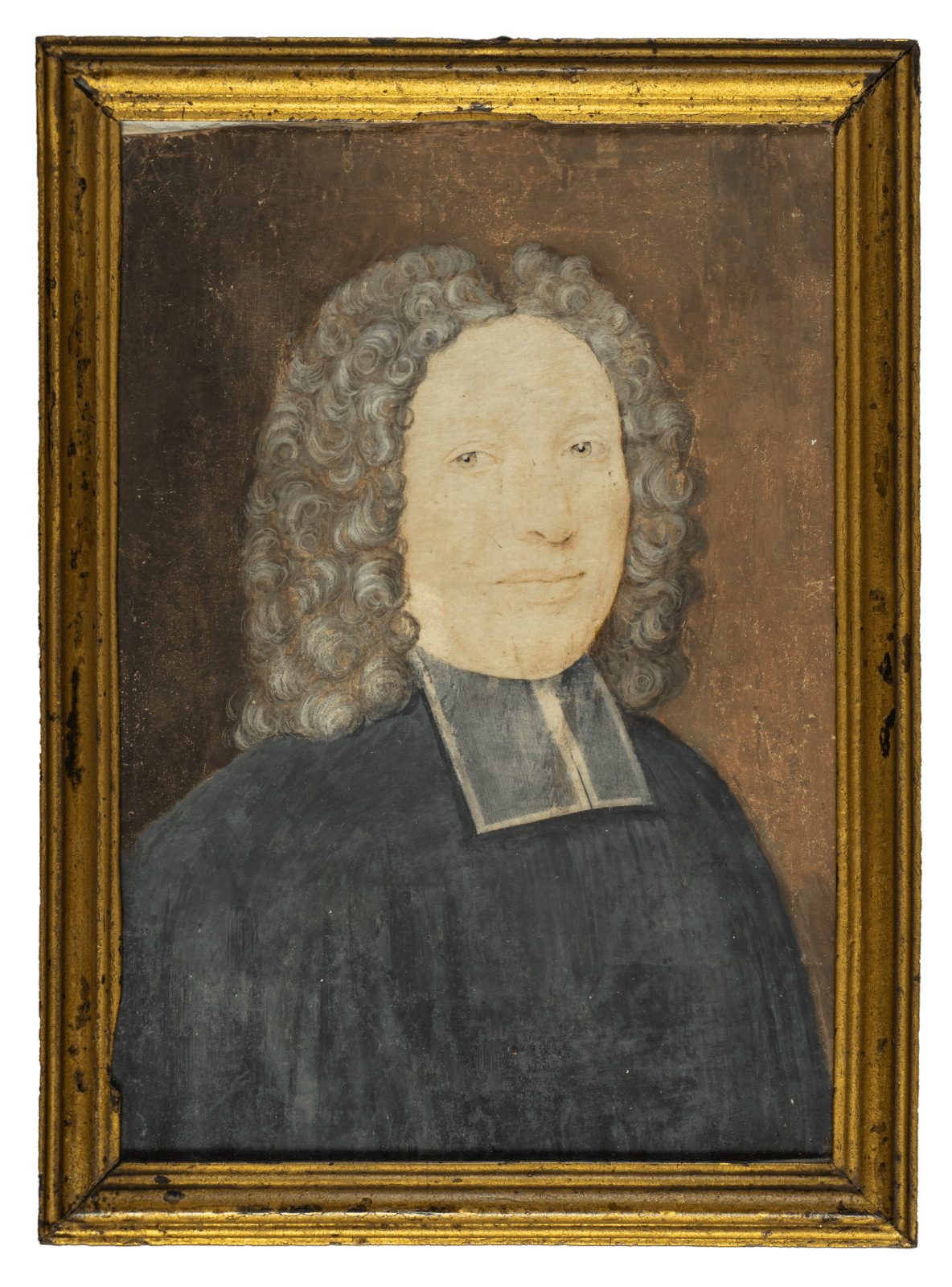Jean-Étienne Liotard (Geneva, 1702-Geneva, 1789)
Portrait of the pastor Jean-Pierre du Maine, 1721
red chalk, Indian ink wash, watercolor and white gouache on parchment; mounted on panel.
23 x 16 cm (framed: 26 x 19 cm).
Signed and dated on the back "Peint en Juillet 1721 par J. Etienne Liotard".
Copyright La Gabrielle Fine Arts SA
CHF 12'000.-
An emblematic figure in the history of art, Jean-Étienne Liotard was one of the most important artists of his time. After training briefly with Daniel Gardelle in Geneva, Jean-Étienne Liotard...
An emblematic figure in the history of art, Jean-Étienne Liotard was one of the most important artists of his time. After training briefly with Daniel Gardelle in Geneva, Jean-Étienne Liotard entered the studio of Jean-Baptiste Massé in Paris in 1723, where he began his apprenticeship. In the spring of 1736, he travelled to Rome, then, in 1738, to Constantinople, where he stayed until 1742, before moving on to Jassy and, in 1743, to Vienna, where he was noticed by the Empress, who hired him as court painter. After brief stays in Venice and Frankfurt, Jean-Étienne Liotard returned to Paris in 1746, where he remained until 1753. He then worked in London, The Hague and Amsterdam. In 1757, the painter returned to his native city with great renown, while continuing to exhibit his works abroad. After a final trip to Vienna in 1777 and a year in Lyon in 1781, Jean-Étienne Liotard settled in the Geneva countryside in 1782. The present portrait is one of the few works by Jean-Étienne Liotard that can be precisely dated to 1721, i.e. before his first trip, thanks to the autograph inscription on the reverse. This Portrait of Jean-Pierre du Maine (1685?-1748), pastor of Lausanne and Daillens, is one of the artist's earliest work, which gives it a remarkable documentary value, all the more so as it is the first documented signed and dated portrait produced in Geneva by Jean-Étienne Liotard.
Provenance
Lausanne, collection Jean-Pierre du Maine.Geneva, collection Hippolyte Gosse.
Geneva, collection Elisabeth Gosse & Hector Maillart.
Geneva, collection Claire Maillart & Arnold Goldschmid.
Geneva, Musée d'art et d'histoire (on loan from 1985 to 2023).
Geneva, collection of the heirs of Claire Maillart.
Exhibitions
Exhibited at:Dessins de Liotard, Genève, Musée d’art et d’histoire, July 17 -September 20, 1992 & Paris, Musée du Louvre, October 15-December 14, 1992, n° 2.
Literature
Published in:J. W. R. Tilanus, La vie et les œuvres de Jean Étienne Liotard (1702-1789), Amsterdam, 1897, p. 121, n° 53.
D. Baud-Bovy, Peintres genevois, Geneva, 1903, I, p. 15.
F. Fosca, Liotard (1702-1780), Paris, 1928, p. 163.
N. S. Trivas, Jean-Étienne Liotard: peintures, pastels et dessins, unpublished manuscript, 1936, n° 110.
M. Roethlisberger & R. Loche, L’opera completa di Jean-Etienne Liotard, Milan, 1978, p. 88, n° 3.
H. Boeckh, "Remarques sur l’origine et la place de la peinture en émail dans l’œuvre de Liotard", Genava, 37, 1989, p. 119.
A. de Herdt, Dessins de Liotard. Suivi du catalogue de l’oeuvre dessiné, exhibition catalogue (Genève, Musée d’art et d’histoire, July 17-September 20, 1992 & Paris, Musée du Louvre, October 15-December 14, 1992), Geneva & Paris, 1992, p. 28, n° 2, 276, n° 4.
M. Roethlisberger & R. Loche, Liotard. Catalogue, sources et correspondance, 2. vol, Anvers, 2008, p. 234-235, cat. n° 4 (I).
P. Lang, « Enrichissements du département des beaux-arts en 2008 », Genava, 57, 2009, p. 220.
